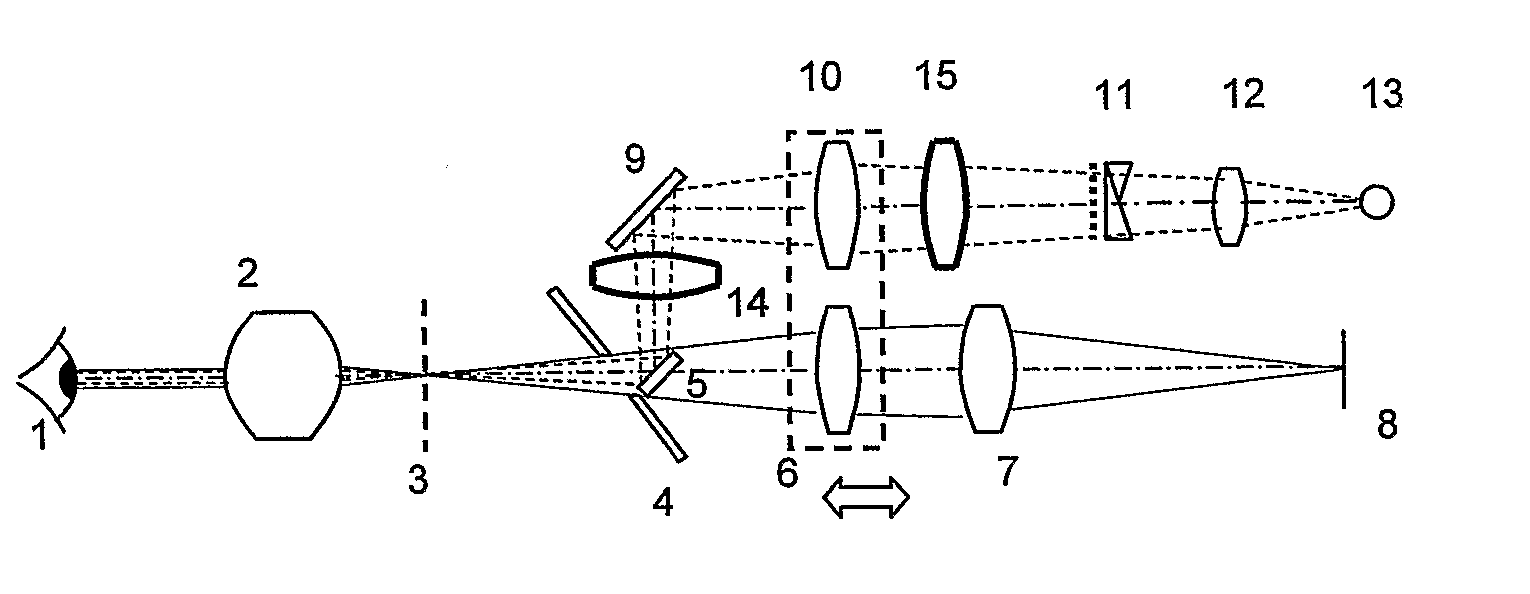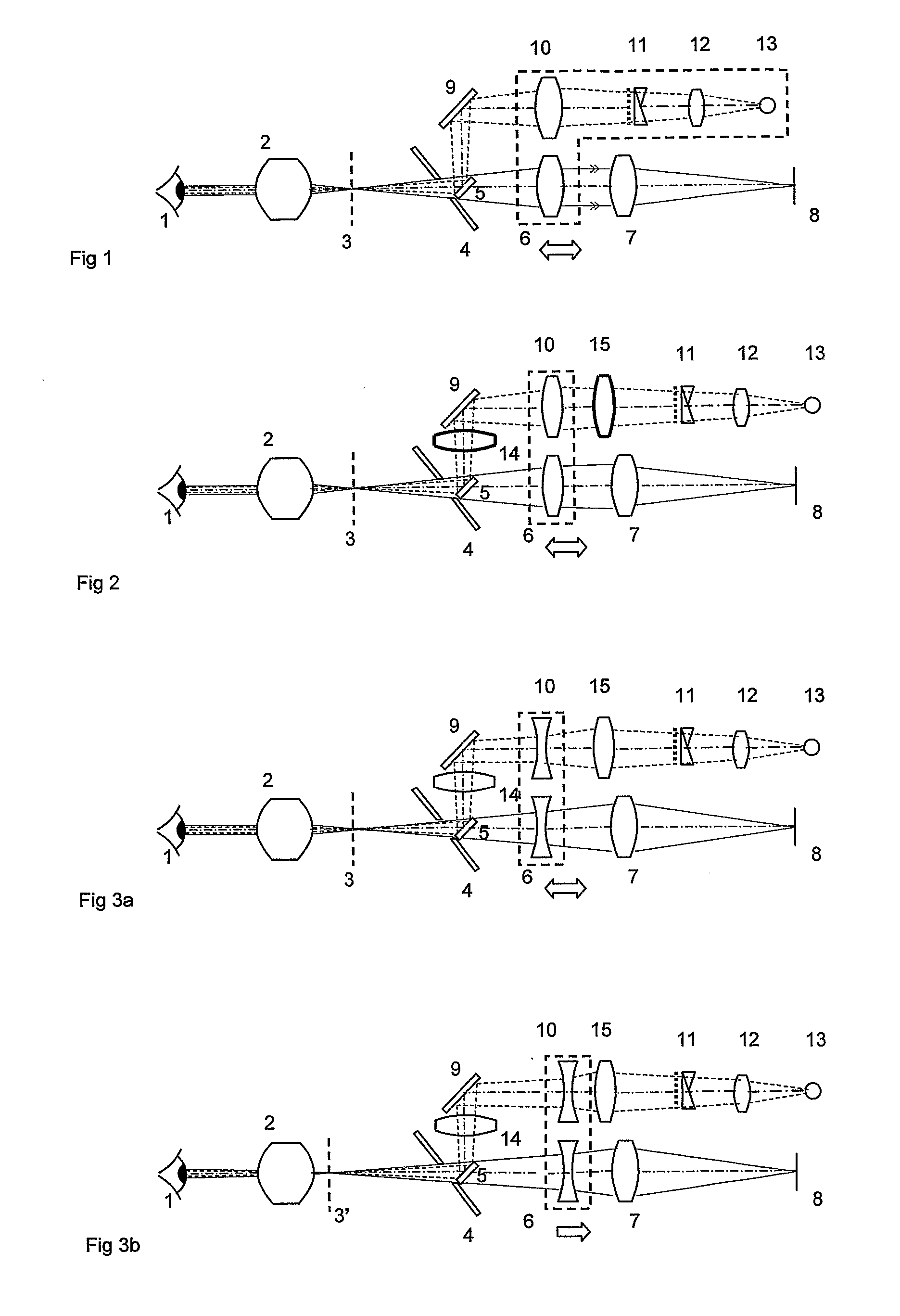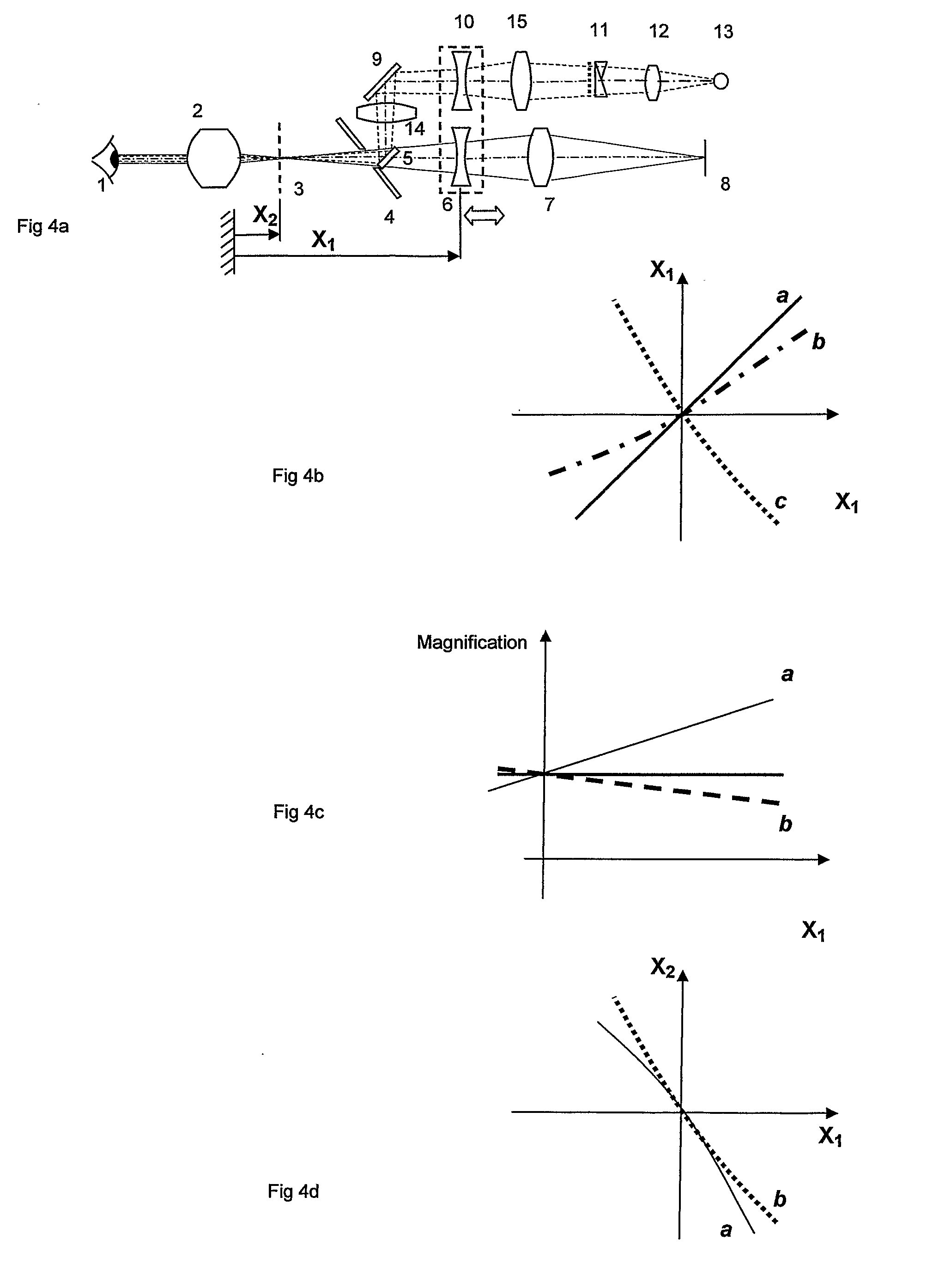Devices to Facilitate Alignment and Focussing of a Fundus Camera
a technology of fundus camera and device, which is applied in the field of devices for aligning and focusing of fundus cameras, can solve the problems of increasing the mechanical complexity of the system and reducing the change in image magnification
- Summary
- Abstract
- Description
- Claims
- Application Information
AI Technical Summary
Benefits of technology
Problems solved by technology
Method used
Image
Examples
Embodiment Construction
[0022] Referring now to the drawings, FIG. 1 shows one example of a fundus camera with projected focus aid marks as described in U.S. Pat. No. 4,187,014. FIG. 1 shows the imaging system of the fundus camera which comprises an objective lens 2 to collect light from the subject eye 1, a hole in the middle of an illumination reflecting mirror 4 to allow light to pass to the focussing lens 6 and imaging lens 7 and then to the imaging device 8. In this invention, the focus aid mark projection system is implemented via components 5,9,10,11,12,13. Note that prisms 11 are shown rotated 90 deg about the optical axis, for clarity. Light from source 13 is collected by the condenser lens 12 then split by the pair of splitting prisms and associated slit mask 11 into two diverging beams, then focussed by lens 10 and reflected by mirrors 9 and 5 so as to pass through two holes in mirror 4 either side of a central hole provided for the light passing to the imaging system 8 and thus to focus an imag...
PUM
 Login to View More
Login to View More Abstract
Description
Claims
Application Information
 Login to View More
Login to View More - R&D
- Intellectual Property
- Life Sciences
- Materials
- Tech Scout
- Unparalleled Data Quality
- Higher Quality Content
- 60% Fewer Hallucinations
Browse by: Latest US Patents, China's latest patents, Technical Efficacy Thesaurus, Application Domain, Technology Topic, Popular Technical Reports.
© 2025 PatSnap. All rights reserved.Legal|Privacy policy|Modern Slavery Act Transparency Statement|Sitemap|About US| Contact US: help@patsnap.com



